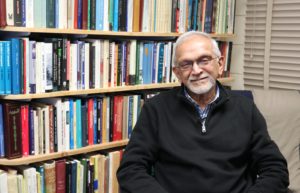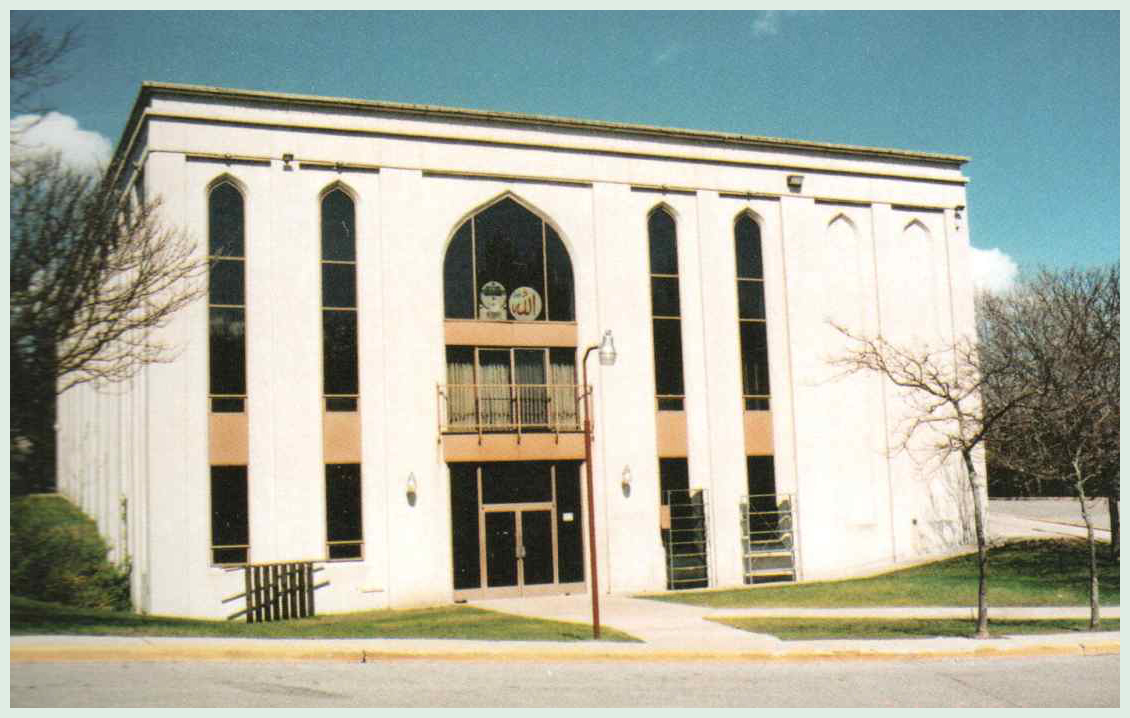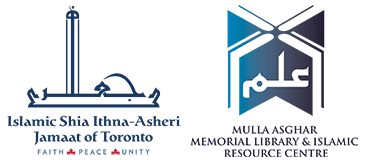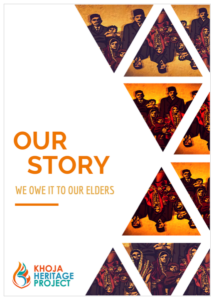The early years – finding our way, planting our roots.
This decade encapsulates the formative years of our community in the Greater Toronto Area (GTA). We planted our roots and formed a Jamaat, just as our forefathers had done all over East Africa during the first half of the 20th century. Nobody could have imagined how much our community would grow and accomplish over the next fifty years. It is a testament to the character, faith and tenacity of those people who first settled here, either by choice or through force of circumstance, that today, we have a thriving community, madrassas for our children and four centres to support our needs, Alhamdulillah.
THE SHIA OF AMERICA, PART 5-FROM SOUTH ASIA TO TORONTO
Ahl-e-Bait TV 2021: “The Shia of America, Part 5 – From South Asia to Toronto”. Commentary by Maulana Sayyid Muhammad Rizvi, Yakub Suleman, Gulam Abbas Najafi and Shabbir Jaffer.
the holy month of Muharram
In the mid to late 1960’s the first Khoja Shia Ithna ’Asheri (KSI) families arrived in Toronto from East Africa. They included Faridabai & Marhum Salim Sachedina, Marhuma Zehrabai & Marhum Mahmud Habib, Sugra & Ashak Rustom and Yaqub Suleman. The first Muharram majlis was held at the Rustom family’s home in Hyde Park.

In 1971 during the holy month of Muharram, Dr Abdul Aziz Sachedina,
then a student at the University of Toronto, recited the evening majlises. He also encouraged the small community to form a Jamaat, like the types they had belonged to in East Africa. A committee chaired by Marhum Salim Sachedina was formed to draft a constitution.
On July 1st at a meeting attended by the entire community of 30 people, a constitution was adopted and the first Jamaat was established and named “East African Khoja Shia Ithna Asheri Union of Toronto”. Its first president was Marhum Mahmud Habib and Dr Abdul Aziz Sachedina was appointed as the Director of Religion. In 1977 its name was changed to Islamic Shia Ithna ’Asheri Union of Toronto, to reflect its growing diversity. Later in 1983 it was changed again to Islamic Shia Ithna ’Asheri Jamaat of Toronto (ISIJ).
The 3,000 Khoja Shia Ithna’ Asheris
On August 4th, 1972, the military dictator General Idi Amin of Uganda ordered the expulsion of all people of Indian origin from his country, referring to them as “Asians”. He gave them just three months to pack and leave the country. Within the Ugandan Asian community there were approximately 3,000 Khoja Shia Ithna’ Asheris. Many years before, they had established Jamaats and built masjids in the capital city of Kampala and in towns across the country. These Jamaats had catered to the spiritual, cultural and social needs of their members for many decades.
Canada accepted several thousand Ugandan Asian refugees and enabled them to settle in cities like Toronto and Vancouver. The few Khoja Shia Ithna Asheri families who had moved to Toronto in the 1960’s helped their fellow community members navigate their way and settle down. In coming to Canada to start their new lives, our grandparents & parents followed in the footsteps of previous generations of Khoja Shia Ithna’ Asheris, who in the late 1800’s and early 1900’s journeyed bravely on dhows across the Indian Ocean from India to the coast of East Africa, seeking better lives for themselves and their families.
In the GTA, obtaining warm clothes, looking for accommodation, finding employment and registering their children in schools were just some of the challenges that these recently arrived people had to face. Many of them moved into rental apartments where other Shia Ithna Asheri families lived. Some hosted informal majlises in their living rooms.
establishing new venues for majlises
In 1973, Liyakat Virjee, a businessman who owned a warehouse in downtown Toronto donated a portion of it to be used for majlis and gatherings. Over the next few years as our numbers increased, new venues for majlises were found in diverse locations such as a bowling alley on Kennedy Rd, Scarborough, and a commercial building at 5050 Yonge St in North York.
The East End Madrassah (EEM)
In 1974, Nusratali Jaffer realized the need to provide children with religious education and began holding Madrassah classes in his apartment in Scarborough on Sunday mornings. He was joined by Firoz Nasser, Marhum Mahmoud Devji and as attendance grew, by Marhum Nisar Sheraly and his wife Sultanabai Sheraly. As more children joined, Nusratali approached the David & Mary Thompson school nearby and asked for the use of their classrooms on Sunday mornings. The school required the name of an institution to be used on the application, so Nusratali secured permission from the founders of the Shia Study Circle to use its name. The school duly granted his request. In later years the Madressah’s name changed to East End Madrassah (EEM) and it operated there for many years before moving to the Jaffari Community Centre, Thornhill in 2011.
The continued Growth

Murrabi Taki Jeraj Merali was appointed as the Jamaat’s first ever Director of Religion. He conducted the prayers for burials, recited majlises and conducted Nikah ceremonies. When the new centre at Bayview opened, he also helped with maintenance and set up the Zaree room, both there and later at JCC.
With the continued growth of the community, it became obvious that a purpose-built facility would soon be needed, and the search for a piece of land to build on began. A fund-raising committee led by Salim Sachedina approached a prominent businessman in the community, Br. Murtaza Gokal, for funds. Murtazabhai offered to build a centre for the community, on the condition that it would be accessible to ALL Shia Muslims. The property was to be called Muhammadi Islamic Centre (MIC) and would be given to the Toronto Jamaat for its use, but its ownership would be retained by the Muhammadi Islamic Trust. A parcel of land at 7340 Bayview Ave, Thornhill was identified and in August 1977 an offer was made for its purchase, subject to having it rezoned for the construction of a mosque. The offer was accepted and an architect, Ms Eva Gordon, was retained by the Trust to prepare the required plans and drawings. Marhum Sheni Haji was appointed Project Manager to oversee the construction phase, and with much dedication guided the project to its completion.

The foundation stone of the new masjid
The foundation stone of the new masjid and centre was laid by Dr Abdul Aziz Sachedina in 1978, with the then Jamaat President Marhum Gulam Sajan and his Executive Committee present. The subsequent opening ceremony on November 4th, 1979 was attended by the Attorney General of Ontario, other civic dignitaries, religious scholars and hundreds of community members. An agreement between Muhammadi Islamic Trust and Toronto Jamaat regarding management of the centre was formalized in December 1979.
Many people in the community however expressed the need for the centre to be owned by the Toronto Jamaat. In July 1983, under the leadership of Jamaat President Husseinali (ChaCha) Paryani, an agreement was reached with Murtaza Gokal and the Muhammadi Trust to transfer MIC to the Toronto Jamaat. Concurrently, its name was changed to “Jaffari Islamic Centre” (JIC), and the community was formally registered as the “Islamic Shia Ithna-Asheri Jamaat (ISIJ) of Toronto”.
Bashir Versi, a legal professional originally from Tanzania, was appointed by the Jamaat as its Legal Advisor. Over the next four decades Bashirbhai helped many of the Jamaat’s leadership teams and Speakers wrestle with constitutional questions.
Toronto Jamaat’s Legal Counsel Bashir Versi

The York Cemetery
Our community needed a place to bury its deceased. During Yakub Suleman’s term as president in 1972-73, he and Mohsin Kamalia arranged to purchase 100 graves at York Cemetery on the East side of Senlac Rd in North York. That cemetery continues to be utilised today with new plots which were since acquired on the West side. The first funeral home used by our community was the Cardinal Funeral Home on Annette Street in Toronto. The first volunteers to give Ghusl/Kafan to the deceased were Kassim Lakhani & Marhum Mohamed Lila for males, and Banubai Damani, Marhuma Fatimabai Mamdani, Marhuma Rukiyabai Kassam and Marhuma Sherbanubai Kara for females. These selfless individuals contacted their counterparts at Jamaats in India and East Africa to learn how to perform the funeral rites in compliance with Fiqh-e-Jaffari.
The leadership
During the 1970’s the fledgling Toronto Jamaat was served by no less than seven presidents and three Heads of the Ladies Committee, who together with their Executive Committees worked tirelessly for the advancement and well-being of the community:
Presidents: Marhum Mahmud Habib, Marhum Salim Sachedina, Yakub Suleman, Marhum Gulam Sajan, Marhum Ebrahim Kassam, Marhum Akber Daya and Marhum Raza Sumar.
Heads of the Ladies Committee: Zehrabai Habib, Nasimbai Esmail, Kanizbai Khimjee.
The community in London, Ontario
The community in the West-End
While many of our community members settled in suburbs like Willowdale, East York, North York, Scarborough and Markham, others chose to live and work in the West End of Toronto, in places like Etobicoke, Rexdale, Mississauga and Brampton. Driving to and from JIC in Thornhill from there to attend programs was time-consuming and so the idea of finding a local centre was discussed. Dr Ashik Najarali and Mustafa Nasser began to organize Quran Khani programs in Ramadan at the Nasser residence. They found a building in Etobicoke to hold Madrassa for children. Dr Najarali and Mustafa bhai took turns to host majlises at their residences.
At that point in time there was no Alim available to recite so they listened to recorded majlises on tape. Then, Alhamdulila, Marhum Molvi Ali Mohamed Jaffer of Dar-es-Salaam and his family settled in Rexdale. He began reciting majlises,leading prayers and Amaals during Muharram and Ramadhan. A Sunni Mosque in Brampton was also used as a venue for majlises.
The community in Hamilton, Ontario
Our community in Hamilton was started by Khoja Shia Ithna Asheri families who had moved there in 1974, following the exodus of Asians from Uganda. Religious functions were held in the homes of the Manek and Moledina families, who had previously resided in the town of Jinja, Uganda. As numbers increased, they had to rent nearby community centres and halls to hold programs, which they did with regularity.

